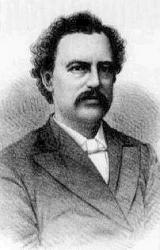Planning worship?
Check out our sister site, ZeteoSearch.org,
for 20+ additional resources related to your search.
- |
User Links
Person Results
‹ Return to hymnal
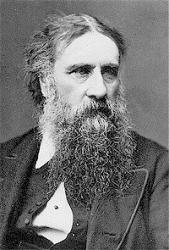
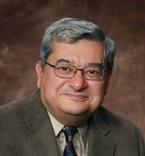

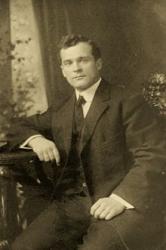

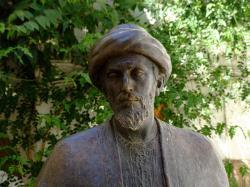
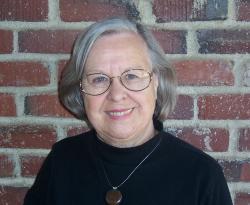
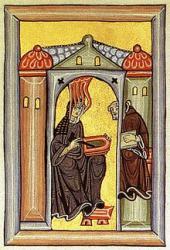


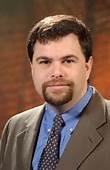
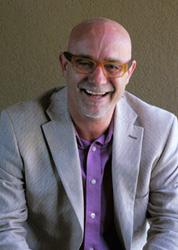
Export as CSV
Henry Percy Smith
1825 - 1898 Person Name: H. Percy Smith Hymnal Number: 583 Composer of "MARYTON" in Voices Together Henry Percy Smith (b. Malta, 1825; d. Bournemouth, Hampshire, England, 1898) was educated at Balliol College, Oxford, England, and ordained a priest in the Church of England in 1850. He served five churches, including St. Michael's York Town in Farnborough (1851-1868), Great Barton in Suffolk (1868-1882), Christ Church in Cannes, France (1882-1892), and the Cathedral in Gibraltar (1892-1898). MARYTON is his only tune found in contemporary hymnals and is thought to be the only tune he published.
Bert Polman
Henry Percy Smith
Nelsie T. Johnson
1912 - 2009 Hymnal Number: 689 Arranger of "AMEN" in Voices Together Nelsie T. Johnson was born in Greer, South Carolina, where she resided. She is a retired school teacher who continues to serve as choir director, organist, and pianist for Presbyterian churches in the Greenville and Spartanburg, South Carolina, area. She was frequently the accompanist for Rev. Joseph T. Jones as he led music for Presbyterian gatherings.
--The Presbyterian Hymnal Companion, 1993
Nelsie T. Johnson
Étienne-Jean-François Borderies
1764 - 1832 Person Name: Etienne J. F. Borderies Hymnal Number: 241 Author (stanza 2) of "O Come, All Ye Faithful" in Voices Together Jean-François-Étienne Borderies ( January 24 1764 - 4 August 1832 ) Is a French Catholic prelate, former Bishop of Versailles.
https://fr.wikipedia.org/wiki/Jean-François-Étienne_Borderies
Étienne-Jean-François Borderies
George Macdonald

1824 - 1905 Person Name: George MacDonald Hymnal Number: 263 Author (portions of stanzas 2, 4) of "From Heaven Above to Earth I Come" in Voices Together Macdonald, George, LL.D., was born at Huntly, Aberdeenshire, Dec. 10, 1824, and educated at King's College, Aberdeen, where he graduated M.A., and from which he afterwards received the honorary degree of LL.D. For a brief time he studied for the Congregational ministry at Highbury College, London, and then became the Minister of the Congregational Church at Arundel, Sussex (1850-53). He afterwards preached for a short time to a small company at Manchester and Bolton. Relinquishing the ministry, he became Lecturer on English Literature at King's College, London, and ultimately gave himself up entirely to literary work. Dr. Macdonald has acquired a great reputation by means of his works of fiction, most of which were originally contributed to magazines, and the most notable of which are David Elginbrod; Robert Falconer; Alec Forbes of Howglen; and Annals of a Quiet Neighbourhood. He was some time Editor of Good Words for the Young, and wrote England's Antiphon for Macmillan's Sunday Library. His poetical works are:—
(1) Within and Without, 1855; (2) The Disciple, and Other Poems, 1860; (3) The Diary of an Old Soul (printed for private circulation), 1867"; (4) Exotics, a volume of translations from the German (most of which first appeared in the Sunday Magazine), 1876; and (5) A Threefold Cord, 1883, part of which previously appeared in his Works of Fancy and Imagination, 10 vols., 1871.
Most of his original hymns were contributed to Hymns and Sacred Songs for Sunday Schools and Social Worship, &c, published by Fletcher and Tubbs, Manchester, in 1855 (2nd. edition, 1856), and of which his brother, and the Rev. G. B. Bubier were the editors. The original hymns, which are signed "G. Macdonald," in this collection are:—
1. A quiet heart, submissive, meek. The Meek inherit the Earth.
2. Daylight fades away. Second Advent.
3. Father, I well may praise Thy name. Sunday Morning.
4. Father, these souls of ours have been. Blessed are the Pure in Heart.
5. If we were longing for the food. Blessed are they that Hunger and Thirst after Righteousness.
6. It was an awful hour that gave. Blessed are the Merciful.
7. Let Thy own voice, 0 Father, say. Blessed are they that mourn.
8. 0 Son of Man, Thy Name by choice. Blessed are the Meek.
9. Our Father, hear our longing prayer. Blessed are the Poor in Spirit.
Some of these hymns were afterwards revised by their author. The next two are from The Disciple, and Other Poems, 1860 :—
10. O God, Whose daylight leadeth down. Evening.
11. O Lord [God] of life, Thy quickening voice. Morning.
Dr. Macdonald's hymns are rich in ideas, but are touched with a mysticism which renders them a little difficult of apprehension. They are however of great value in setting forth truths rarely expressed in hymns, and are likely to grow in favour. [Rev. W. Garrett Horder]
-- John Julian, Dictionary of Hymnology (1907)
=======================
http://en.wikipedia.org/wiki/George_MacDonald
George Macdonald
E. F. Wunderlich
1830 - 1895 Person Name: Erhardt Friedrich Wunderlich Hymnal Number: 658 Translator (German) of "Nearer, My God, to Thee" in Voices Together
E. F. Wunderlich
Richard Massie
1800 - 1887 Hymnal Number: 463 Translator (English) of "Christ Jesus Lay" in Voices Together Massie, Richard, eldest son of the Rev. R. Massie, of Goddington, Cheshire, and Rector of Eccleston, was born at Chester, June 18, 1800, and resides at Pulford Hall, Coddington. Mr. Massie published a translation of Martin Luther’s Spiritual Songs, London, 1854. His Lyra Domestica, 1st series, London, 1860, contains translations of the 1st Series of Spitta's Psalter und Harfe. In 1864 he published vol. ii., containing translations of Spitta's 2nd Series, together with an Appendix of translations of German hymns by various authors. He also contributed many translations of German hymns to Mercer's Church Psalter & Hymn Book; to Reid's British Herald; to the Day of Rest, &c. He died Mar. 11,1887.
-- John Julian, Dictionary of Hymnology (1907)
Richard Massie
John Webster Grant
1919 - 2006 Person Name: John W. Grant Hymnal Number: 53 Translator of "O Holy Spirit, by Whose Breath" in Voices Together Grant, John Webster. (Truro, Nova Scotia, June 27, 1919- ). United Church. Dalhousie University (Halifax), B.A., 1938, M.A., 1941; Keble College, Oxford, D.Phil., 1948. Served as a Navy chaplain during World War II; acted as editor-in-chief of Ryerson Press (Toronto), 1959-1963; taught church history at Pine Hill Divinity School (Halifax), 1948-1949; Union College (Vancouver), 1949-1957; in South India, 1958-1959; and at Emmanuel College (Toronto), 1963-?. He published many books and articles in his field of specialty, notably The church in the Canadian era (1972). His hymn-writing began with translations and paraphrases, but even they reveal his unusual range of talent and expertise.
--Hugh D. McKellar, DNAH Archives
John Webster Grant
Richard D. Wetzel
b. 1935 Hymnal Number: 387 Arranger of "ST. BRENDAN’S" in Voices Together Richard D. Wetzel (b. 1935) received the Ph.D. in Musicology from the University of Pittsburgh, studying under D�nes Bartha, Theodore Finney, and Robert Snow. He joined the faculty of Ohio University in 1970. Dr. Wetzel's area of emphasis is American Music, and he is published in The New Grove Dictionary of American Music and American National Biography. His book, Frontier Musicians, is a definitive work on German-American music of the 18th and 19th centuries. Wetzel is also a composer and hymnologist, and his liturgical music is found in numerous denominational hymnals, including those published by the Episcopal and Presbyterian churches and the United Church of Christ. Professor Wetzel was the recipient of Ohio University's Outstanding University Professor Award and is currently Chair of Graduate Studies in the School of Music. His arrangement of Geoffrey Ainger's tune, MARY'S CHILD, can be found in the Worship & Rejoice hymnal.
http://www.hopepublishing.com
Richard D. Wetzel
Howard S. Olson
1922 - 2010 Hymnal Number: 341 Translator of "Mfurahini, haleluya (Christ Has Arisen, Alleluia!)" in Voices Together Howard Olson (b. 1922; d. 2010), longtime missionary/teacher in African, compiled a number of African songs in Set Free (Augsburg Fortress, 1993). Many were folk tunes to which Christian Swahili texts were later added. He wrote in the introduction: “In their original form these tunes wee sung with uninhibited improvisation. Consequently the form in which these songs appear in this book represents only one of several possibilities.”
Sing! A New Creation
Howard S. Olson
Robert J. Batastini

b. 1942 Hymnal Number: 476 Author of "Eat This Bread (Coman de este pan)" in Voices Together Robert J. Batastini is the retired vice president and senior editor of GIA Publications, Inc., Chicago. Bob has over fifty-five years of service in pastoral music ministry, having served several parishes in the Archdiocese of Chicago and one in the Diocese of Joliet. He served as executive editor and project director for the Worship hymnals (three editions), Gather hymnals (three editions), Catholic Community Hymnal, and as executive editor of RitualSong.
In 1993 he became the first recipient of the Father Lawrence Heimann Citation for lifetime contribution to church music and liturgy in the U.S., awarded by St. Joseph's College, Rensselaer, Indiana, and was named "Pastoral Musician of the Year-2000" by the National Association of Pastoral Musicians (NPM). At its 2006 conference, he was named a Fellow of the Hymn society in the United States and Canada.
In his retirement he is active in the music ministry of St. Francis de Sales Parish, Holland, MI.
Nancy Naber, from www.giamusic.com/bios/
Robert J. Batastini
August Heinrich Hoffmann von Fallersleben
1798 - 1874 Person Name: Heinrich A. H. von Fallersleben Hymnal Number: 130 Author (stanza 2) of "Schönster Herr Jesu (Beautiful Savior)" in Voices Together
August Heinrich Hoffmann von Fallersleben
Guillermo Cuéllar
b. 1955 Hymnal Number: 102 Author of "Santo, santo, santo (Holy, Holy, Holy)" in Voices Together In the mid-1980s, composer Guillermo Cuéllar composed the folk mass La Misa Popular Salvadoreña as a result of a commission from Archbishop Oscar Romero. Romero was assassinated while celebrating mass in El Salvador. Cuéllar himself was forced into exile for ten years due to threats on his life.
Sing! A New Creation
Guillermo Cuéllar
William Dexheimer-Pharris
b. 1956 Hymnal Number: 760 Composer of "TOMA MI VOLUNTAD" in Voices Together
William Dexheimer-Pharris
William M. Reynolds
1812 - 1876 Hymnal Number: 214 Translator (stanzas 1, 2) of "Savior of the Nations, Come!" in Voices Together Born: March 4, 1812, Fayette County, Pennsylvania.
Died: September 5, 1876, Oak Park, Illinois.
Reynolds was educated at Jefferson College, Canonsburg, Pennsylvania, and Lutheran Gettysburg Seminary. He was a professor at Pennsylvania College (1833-50); president of Capital University, Columbus, Ohio (1850-53); and president of Illinois State University (1857-60). He became an ordained Episcopal minister in 1864, and founded the Evangelical Review. His last pastorate was at Christ Church, Harlem (Oak Park), Illinois, from 1872 until his death.
Lyrics--
Come, Thou Savior of Our Race
Come, Thou Soul Transforming Spirit
Eternity, Terrific Word
Jesus, My Lord, Thy Nearness Does Impart
Lord Jesus Christ, to Thee We Pray
O God, Look Down from Heaven, We Pray
O Holy Ghost, Descend We Pray
O Lord, Uphold Us by Thy Word
O Lord, We Would Praise Thee
Rejoice, Ye Ransomed of the Lord
Translations--
"Savior of the Nations, Come"
---www.hymntime.com/tch
William M. Reynolds
Carlton R. Young

b. 1926 Person Name: Carlton Young Hymnal Number: 134 Composer of "WESTCHASE" in Voices Together
Carlton R. Young
Harry Webb Farrington

1880 - 1930 Person Name: Harry W. Farrington Hymnal Number: 573 Author of "Strong, peaceful man of Galilee" in Voices Together
Harry Webb Farrington
Gerhard M. Cartford
1923 - 2016 Person Name: Gerhard Cartford Hymnal Number: 23 Translator of "Hamba nathi (Come, Walk with Us)" in Voices Together Gerhard Cartford was born in 1923. He helped to edit the Lutheran Book of Worship (1978) and wrote the liturgical chant service for the hymnal. He also translated some hymns for Libro de Litugia y Cántico and also helped edit this hymnal. He was head of the Music Department at Texas Lutheran University for 13 years
Lynette (Mann) Parkhurst, former student
Gerhard M. Cartford
Joseph Renville
1779 - 1846 Person Name: Joseph R. Renville Hymnal Number: 128 Author of "Wakantanka (Many and Great)" in Voices Together Joseph R. Renville’s mother was Dakota and his father, French. An explorer, fur trader, and Congregational minister, Renville helped found the Lac qui Parle Mission in Minnesota in 1835. This song, which is also known as the “Dakota Hymn,” was sung by thirty-eight Dakota prisoners of war as they were led to execution at Mankato, Mennesota, on December 26, 1862. This song was first published in the Dakota Indian Hymnal (1916).
Sing! A New Creation
Joseph Renville
St. Teresa of Avila
1515 - 1582 Person Name: Teresa of Ávila Hymnal Number: 604 Author (attributed) of "Nada te turbe" in Voices Together
St. Teresa of Avila
Alexander Mack
1679 - 1735 Person Name: Alexander Mack Sr. Hymnal Number: 577 Author of "Count Well the Cost" in Voices Together Alexander Mack was born in 1679 at Schriesheim, between Mannheim and Heidelberg. He was brought up in the Reformed faith. He was not satisfied with the formalism of the Catholic, Lutheran, or Reformed churches, but also not satisfied with the Pietists, who believed religion was of the heart, and rejected the organized church. He founded the Church of the Brethren in 1708 in Schwarzenau, Wittgenstein. The church sought to adopt the teachings of the New Testament, and practiced baptism by immersion. Because of this they were also known as "Dunkers." The church grew in Schwarzenau but was scattered by persecution. The leaders decided to come to the United States and nearly the whole denomination migrated to the States starting in 1719. Mack move with his family in 1729, where he led the church until his death in 1735.
Dianne Shapiro from The Religious Poetry of Alexander Mack, Jr. by Samuel B. Heckman (Elgin, IL: Brethren Publishing House, 1912)
Alexander Mack
Horace Clarence Boyer
1935 - 2009 Hymnal Number: 213 Arranger of "WAYFARING STRANGER" in Voices Together Horace Boyer (b. Winter Park, Flordia, July 28, 1935; d. Amherst, Massachusetts, July 21, 2009) was professor of music at the University of Massachussetts, Amhurst, editor of the African American hymnal Lift Every Voice and Sing, Lift Every Voice and Sing II, and author of How Sweet the Sound: The Golden Age of Gospel (Elliot & Clark, 1995).
Sing! A New Creation
Horace Clarence Boyer
Richard Leach
b. 1953 Hymnal Number: 211 Author of "Hope Is a Candle" in Voices Together
Richard Leach
Emily R. Brink

b. 1940 Person Name: Emily Brink Hymnal Number: 675 Translator and Adapter of "أبانا الذي في السماء Abana alathi (Abana in Heaven)" in Voices Together Emily R. Brink is a Senior Research Fellow of the Calvin Institute of Christian Worship and Adjunct Professor of Church Music and Worship at Calvin Theological Seminary, Grand Rapids, Michigan. Her main areas of responsibility are conference planning and global resources. She is program manager of the annual Calvin Symposium on Worship, which draws more than 70 presenters and 1600 participants from around the world. She also travels widely to lecture and to learn about worship in different parts of the world, especially in Asia, where she has lectured in Bangladesh, China, Hong Kong, India, Indonesia, Japan, Nepal, Pakistan, Philippines, Singapore, and Taiwan.
Her areas of interest include congregational song from all times and places; psalmody; hymnal editing. She was editor of four hymnals and consults with a wide range of churches on worship renewal issues. Dr. Brink is active in the American Guild of Organists, serving in both local and national offices, as well as in the Hymn Society in the United States and Canada (president from 1990 1992) and named a Fellow of the Hymn Society in 2004 in recognition of distinguished services to hymnody and hymnology.
--internal.calvinseminary.edu/
Emily R. Brink
Michael Pope
Person Name: Michael Pope, SJ Hymnal Number: 545 Arranger of "HERE I AM, LORD" in Voices Together
Michael Pope
Alexander Gondo
Hymnal Number: 2 Author of "Uyai mose (Come All You People)" in Voices Together
Alexander Gondo
Bliss Wiant
1895 - 1975 Hymnal Number: 498 Arranger of "LE P’ING" in Voices Together Bliss Wiant (1895-1975) was educated at Wittenberg College and Ohio Wesleyan University (B.A. 1920), Boston University (M.A. 1936), and Peabody College (Ph.D. 1946). He also studied at Harvard University and Union Theological Seminary, New York City After ordination (1923), Wiant became head of the music department at Yenching University, Peking (1923-1951). He was pastor of St. Paul’s Church, Delaware, Ohio (1953-1955), then minister of music at Mahoning Methodist Church, Youngstown, Ohio. After serving with the Methodist Board of Education, he became director of music at Scarritt College.
--The Presbyterian Hymnal Companion, 1993
===============================
Letter from Mildred Bliss to Mary Louise VanDyke (8 January 1987) outlining activity in the 1960s and 1970s is available in the DNAH Archives.
Bliss Wiant
Moses Maimonides

1135 - 1204 Hymnal Number: 204 Author of "Praise to the Living God" in Voices Together Moses Maimonides, original name Moses Ben Maimon, also called Rambam, Arabic name Abū ʿImran Mūsā ibn Maymūn ibn ʿUbayd Allāh (born March 30, 1135, Córdoba [Spain]—died Dec. 13, 1204, Egypt), Jewish philosopher, jurist, and physician, the foremost intellectual figure of medieval Judaism. His first major work, begun at age 23 and completed 10 years later, was a commentary on the Mishna, the collected Jewish oral laws. A monumental code of Jewish law followed in Hebrew, The Guide for the Perplexed in Arabic, and numerous other works, many of major importance. His contributions in religion, philosophy, and medicine have influenced Jewish and non-Jewish scholars alike.
--www.britannica.com/
Maimonides's full name was Moses ben Maimon; in Hebrew he is known by the acronym of Rabbi Moses ben Maimon, Rambam. He was born in Spain shortly before the fanatical Muslim Almohades came to power there. To avoid persecution by the Muslim sect — which was wont to offer Jews and Christians the choice of conversion to Islam or death — Maimonides fled with his family, first to Morocco, later to Israel, and finally to Egypt. He apparently hoped to continue his studies for several years more, but when his brother David, a jewelry merchant, perished in the Indian Ocean with much of the family's fortune, he had to begin earning money. He probably started practicing medicine at this time.
Maimonides's major contribution to Jewish life remains the Mishneh Torah, his code of Jewish law. His intention was to compose a book that would guide Jews on how to behave in all situations just by reading the Torah and his code, without having to expend large amounts of time searching through the Talmud. Needless to say, this provocative rationale did not endear Maimonides to many traditional Jews, who feared that people would rely on his code and no longer study the Talmud. Despite sometimes intense opposition, the Mishneh Torah became a standard guide to Jewish practice: It later served as the model for the Shulkhan Arukh, the sixteenthcentury code of Jewish law that is still regarded as authoritative by Orthodox Jews.
Philosophically, Maimonides was a religious rationalist. His damning attacks on people who held ideas he regarded as primitive — those, for example, who understood literally such biblical expressions as “the finger of God” so infuriated his opponents that they proscribed parts of his code and all of The Guide to the Perplexed. Other, more liberal, spirits forbade study of the Guide to anyone not of mature years. An old joke has it that these rabbis feared that a Jew would start reading a section in the Guide in which Maimonides summarizes a rationalist attack on religion, and fall asleep before reading Maimonides's counterattack-thereby spending the night as a heretic.
How Maimonides's opponents reacted to his works was no joke, however. Three leading rabbis in France denounced his books to the Dominicans, who headed the French Inquisition. The Inquisitors were only too happy to intervene and burn the books. Eight years later, when the Dominicans started burning the Talmud, one of the rabbis involved, Jonah Gerondi, concluded that God was punishing him and French Jewry for their unjust condemnation of Maimonides. He resolved to travel to Maimonides's grave in Tiberias, in Israel, to request forgiveness.
Throughout most of the Jewish world, Maimonides remained a hero, of course. When he died, Egyptian Jews observed three full days of mourning, and applied to his death the biblical verse "The ark of the Lord has been taken" (I Samuel 4:11).
To this day, Maimonides and the FrenchJewish sage Rashi are the most widely studied Jewish scholars. Contemporary yeshiva students generally focus on the Mishneh Torah, and his Book of Commandments (Sefer haMitzvot) a compilation of the Torah's 613 commandments. Maimonides also formulated a credo of Judaism expressed in thirteen articles of faith, a popular reworking of which (the Yigdal prayer) appears in most Jewish prayerbooks. Among other things, this credo affirms belief in the oneness of God, the divine origins of the Torah, and the afterlife. Its twelfth statement of faith — “I believe with a full heart in the coming of the Messiah, and even though he may tarry I will still wait for him” — was often among the last words said by Jews being marched into Nazi gas chambers.
Maimonides was one of the few Jewish thinkers whose teachings also influenced the nonJewish world; much of his philosophical writings in the Guide were about God and other theological issues of general, not exclusively Jewish, interest. Thomas Aquinas refers in his writings to “Rabbi Moses,” and shows considerable familiarity with the Guide. In 1985, on the 850th anniversary of Maimonides's birth, Pakistan and Cuba — which do not recognize Israel — were among the cosponsors of a UNESCO conference in Paris on Maimonides. Vitali Naumkin, a Soviet scholar, observed on this occasion: “;Maimonides is perhaps the only philosopher in the Middle Ages, perhaps even now, who symbolizes a confluence of four cultures: GrecoRoman, Arab, Jewish, and Western.” More remarkably, Abderrahmane Badawi, a Muslim professor from Kuwait University, declared: “I regard him first and foremost as an Arab thinker.” This sentiment was echoed by Saudi Arabian professor Huseyin Atay, who claimed that “if you didn't know he was Jewish, you might easily make the mistake of saying that a Muslim was writing.” That is, if you didn't read any of his Jewish writings. Maimonides scholar Shlomo Pines delivered perhaps the most accurate assessment at the conference: “Maimonides is the most influential Jewish thinker of the Middle Ages, and quite possibly of all time” (Time magazine, December 23, 1985). As a popular Jewish expression of the Middle Ages declares: “From Moses [of the Torah] to Moses [Maimonides] there was none like Moses.”
Source: Joseph Telushkin. Jewish Literacy. NY: William Morrow and Co., 1991. Reprinted by permission of the author.
--www.jewishvirtuallibrary.org/jsource/biography/Maimonides.html
Moses Maimonides
Jean Janzen

b. 1933 Hymnal Number: 426 Author of "Mothering God, You Gave Me Birth" in Voices Together Jean Janzen was born on December 5, 1933, the seventh of Henry Peter Wiebe and Anna Schultz Wiebe's eventual eight children (Three Mennonite Poets 5). For the first five years of her life, Janzen lived in Dalmeny, Saskatchewan (A Cappella 25). In 1938, she moved to Mountain Lake, Minnesota when her schoolteacher father began his second ministry as a pastor (“Coming into Voice”). A year later, the family moved to Kansas (“Coming into Voice”).
Janzen says she cannot remember when she wrote her first poem, but the first evidence of her work is a handwritten book of five poems that she made in third or fourth grade, which was saved by her mother through the family’s many moves (E-mail Interview). She had very little exposure to poetry and literature as a child, except for hymns and Bible stories. She values these elements of her childhood and “treasure[s] the artful rhythms of the King James [Bible]” (E-mail Interview).
Janzen attended Meade Bible Academy, Tabor College, and Grace College (A Cappella 25). It was in college that she had her first real exposure to literature. She was “thrilled, and became a literature major.” She remembers being “enamored” with Emily Dickinson and writing papers about her whenever given the chance. However, she never considered writing poetry as a possible career (E-mail Interview).
Janzen--then Jean Wiebe--married Louis Janzen, a medical student, and the couple moved to Chicago where she worked as a medical secretary while taking courses at Northwestern University (Hostetler, A Cappella 25). Janzen cites this period of her life as the beginning of her love for visual art, calling the Chicago Art Institute the “open gate” for her and her husband where they “became hooked” (Mennonite Life Interview). In 1961, they moved to Fresno, Cal., where Louis worked as a pediatrician in a private practice. Here they raised their two daughters and two sons.
When her youngest child was in school, Janzen “joined a writer’s group at the encouragement of [her] husband and nephew after they read some poems [she] had written as a gift to [her] husband” (E-mail Interview). As her children became older, Janzen went back to college, earning a BA in English from Fresno Pacific College and an MA in Creative Writing and English from California State University at Fresno in 1982. There she studied with poets Peter Everwine, Philip Levine, and C.G. Hanzlicek. Janzen says that after one semester of writing poetry in college, she took the work “seriously” and “imagined the possibility of growing into a poet,” but it took her several years “to be willing to say that out loud” (E-mail Interview).
Rudy Wiebe, a Mennonite novelist, served as a mentor who influenced Janzen's writing career. She received a grant from the National Endowment for the Arts in 1995 (“Coming into Voice”). Janzen grew up in the Evangelical Mennonite Brethren Church and many of her relatives, including her father, were pastors (“Coming into Voice”). This strong connection with the church has had a significant influence on her poetry.
Music has also played an important role in Janzen’s life. Her mother loved music and music was an important part of worship in her church. She learned to play the piano when she was young, later studying music in college and teaching piano for many years (“Coming into Voice”). Janzen finds harmony between the religious and artistic elements of her life, integrating them in a way that enriches both. She also uses her gifts in the church, serving as a minister of worship at the College Community Mennonite Brethren Church in Clovis, Cal., as well as writing hymn texts, which have been set to music and are included in several hymn books.
Other prominent themes in her work include art, history, family, the earth, and her Russian Mennonite ancestors (“Coming into Voice”). Janzen says that “the sensual and spiritual are inevitably intertwined” (Mennonite Life Interview) and it is this element of her work that has attracted the most attention from critics and readers. She emphasizes “the presence of spirit in the flesh,” using rich description of physical objects to reveal deeper emotions and truths. Janzen has taught poetry writing at Fresno Pacific University and Eastern Mennonite University in Virginia.
--www.goshen.edu/mennonitepoetry/
Jean Janzen
Matt Redman
b. 1974 Hymnal Number: 637 Author of "Blessed Be Your Name" in Voices Together Matt Redman (b. February 14, 1974) began leading worship full-time at age 20, serving churches in Chorleywood, Brighton, West Sussex, and Atlanta, Georgia, where he worked with Chris Tomlin and Louie Giglio for the Passion Conferences. He is known for songs such as “The Heart of Worship,” “Better is One Day,” and “Blessed Be Your Name.” His 2012 song “10,000 Reasons (Bless the Lord),” co-written with Jonas Myrin, won two Grammy awards in 2013. Redman has written a number of books, including Mirror Ball and The Unquenchable Worshipper. He and his wife Beth have five children, and are currently based at St. Peters Church in Brighton, England.
Laura de Jong
Matt Redman
Saint Hildegard

1098 - 1179 Person Name: Hildegard of Bingen Hymnal Number: 663 Author of "I Am That Great and Fiery Force" in Voices Together Hildegard, St., Virgin and Abbess, was born at Bockelheim, or Bockenheim, Frankfurt, 1098. Her father, Hildebert, was one of the Knights of Meginhard, Count of Spanheim. When eight years old she was committed to tho care of a sister of the Count, Jutta, the Abbess of St. Disibod, a position in which she was succeeded by Hildegard in 1136. Under the rule of Hildegard the convent became so crowded that a new one was built at Rupertsberg, near Bingen, into which, in 1147, Hildegard removed with eighteen Sisters. Hildegard gained great notoriety in very early life on account of visions to which, it is said, she was subject from her 6th to her 15th year. In later life she filled a considerable place in the history of her times, not only as a writer who had the courage of her opinions, and spared neither high nor low in her vigorous denunciations of their shortcomings, political as well as moral, but as a prophetess and preacher. At the instigation of St. Bernard she took a most prominent part in stirring up the unfortunate crusade which he preached, and engaged in many controversies with the hierarchy of her Church. Though she never ceased to be the abbess of the convent she had founded, much of her time was spent in travelling about the Continent, preaching and prophesying. She died in 1179, and was buried at Eupertsberg, but her remains were removed, on the destruction of that convent by the Swedes, to Eilingen, in 1622.
Though St. Hildegard was a voluminous writer her contributions to the hymnody of her day were neither numerous nor important. Mone gives three sequences which are attributed to her, viz., one on the Holy Spirit, “0 ignis Spiritus paracliti"; another on the Blessed Virgin Mary, "0 Virga ac diadema purpurae Regis"; and a third on St. Disibod, "0 praesul verae civitatis." [Rev. Digby S. Wrangham, M.A.]
-- John Julian, Dictionary of Hymnology
Saint Hildegard
Austin C. Lovelace

1919 - 2010 Hymnal Number: 765 Arranger of "NENO LAKE MUNGU" in Voices Together LOVELACE, AUSTIN C., AAGO: (1919-2010) D.S.M., Union Theological Seminary, New York. Recitals, workshops, festivals, lectures in 17 different denominations in 45 states as well as in Finland, Scotland, Canada, and New Zealand. Past President, Fellow, and Life member, HSUSC. 50 year member, Hymn Society of Great Britain and Ireland. Author of five books; co-editor and consultant of denominational and other hymnals. Longtime member, ASCAP. Composer of over 800 compositions published by 20 publishers. Organist for the 2nd Assembly of the World Council of Churches, 1954. Dean of the first North Carolina Chapter, AGO. Chairman of the 1968 National Convention, AGO, in Denver. Two terms on the National Council, AGO. Co-founder, with Tom Matthews, of the North Shore Chapter, AGO. Minister of Music Emeritus. Denver Chapter, AGO.
Austin C. Lovelace (from In Melody and Song, Darcey Press, 2014)
Austin C. Lovelace
Darlene Zschech
b. 1965 Hymnal Number: 125 Author of "Shout to the Lord (Cante al Señor)" in Voices Together
Darlene Zschech
Théodore Dubois

1837 - 1924 Person Name: Theodore Dubois Hymnal Number: 138 Composer of "ADORE THEE" in Voices Together Francois Clement Theodore Dubois France 1837-1924. Born at Rosnay, Marne, France, he studied piano and was educated for a musical career at the Reims Cathedral, under Louis Fanart, and later at the Paris Conservatoire, under Ambroise Thomas. He married Jeanne-Adrienne Fortunee Augustine Duvinage. He became choirmaster at the Church of the Madeleine in 1868, and in 1871 choirmaster at the Basilica of Sainte-Clotilde. He was a friend of Franz Liszt. In 1877, he returned to the Church of the Madeleine as organist. From 1871 he taught music as professor of harmony at the Paris Conservatoire. He became Director of the Conservatoire in 1896. In 1905 he was forced into retirement as a result of a public scandal (over musician rivalry concerning Maurice Ravel). He was a composer, organist, and music teacher. He wrote nine operas. His music included many religious works, two ballets, four oratorios, seven chamber music works, 14 orchestral works (including three symphonies) and three other compositions. Most of his music is no longer in use. He wrote four musical training works. He is known for his work: “The seven last words of Christ”. He received three major awards: Prix de Rome, Commander of the Legion of Honor, Officer of the French Order of Academic Palms. He died in Paris.
John Perry
Théodore Dubois
Leenaerdt Clock
Hymnal Number: 45 Author of "O Gott Vater (O God and Father)" in Voices Together
Leenaerdt Clock
Paul B. Smith
Hymnal Number: 443 Adapter of "I Have Decided to Follow Jesus" in Voices Together
Paul B. Smith
Michael Mahler
Hymnal Number: 790 Author of "How Can We Be Silent" in Voices Together
Michael Mahler
Marilyn Houser Hamm
b. 1951 Hymnal Number: 131 Composer (Accompaniment) of "JE LOUERAI L’ÉTERNEL" in Voices Together
Marilyn Houser Hamm
George Lockwood
b. 1946 Person Name: George Lockwood IV Hymnal Number: 283 Translator of "Tú has venido a la orilla (Lord, You Have Come to the Lakeshore)" in Voices Together Rev. George Lockwood was born in 1946 and has been a missionary to Costa Rica. He has pastored Spanish-speaking congregations in both Arizona and California and served on the editorial committee for the Methodist hymnal supplement Celebremos II. In addition, Lockwood has traveled throughout Central and South America interviewing church musicians and gathering new hymns from both Spanish and Portuguese cultures which he then presents at conferences and workshops.
The Presbyterian Hymnal Companion, 1993
George Lockwood
Reuben Morgan
b. 1975 Hymnal Number: 775 Author of "I Will Follow" in Voices Together Reuben Morgan is the Worship Pastor at Hillsong Church in London. Before this he was Worship Pastor at Hillsong Church in Sydney, Australia, replacing Darlene Zchech in 2008. In the late 1990s, Morgan helped lead and develop the worship team for Hillsong’s Youth Group, Powerhouse. This band eventually grew into Hillsong United. Some of Morgan’s better known songs include “Hear our Praises,” “My Redeemer Lives,” and “Lord I Give You My Heart.” He released his first solo worship album, World Through Your Eyes, in 2005. He and his wife Sarah have three children.
Laura de Jong
Reuben Morgan
David Gambrell

Hymnal Number: 146 Author of "Lord Jesus, Come and Overturn" in Voices Together Rev. David Gambrell is associate for worship in the PC(USA) Office of Theology
and Worship and editor of Call to Worship, and an ex officio advisor to the hymnal committee.
Education: Ph.D., liturgical studies
Garrett-Evangelical Theological Seminary
Austin Presbyterian Theological Seminary
--www.presbyterianmission.org/ministries
David Gambrell
Bob Kilpatrick

b. 1952 Hymnal Number: 754 Author of "In My Life Lord, Be Glorified" in Voices Together Bob Kilpatrick is a Scottish-American singer/songwriter/producer/broadcaster, born in Louisville, Kentucky.
He is best known for composing the gospel standard "In My Life Lord Be Glorified", being the driving force behind Fair Oaks Records in Sacramento, CA and for presenting a regular Time Out With Bob Kilpatrick on the K-Love Radio Network.
His live musical output is a mix of folk, gospel and progressive rock. Beginning in the early 70’s with his wife Cindy (similar in style to Richard & Linda Thompson) and touring through much of the 1980s and 1990s predominantly as a solo artist. His self-effacing live demeanor could be likened to a "born-again" Loudon Wainwright III. The remainder of the 1990s and the start of the following decade saw him develop into an eminent Christian music producer, working with the likes of Randy Stonehill, Phil Keaggy, Sara Groves and Noel Stookey.
In 2006, Kilpatrick released his most innovative project to date entitled This Changes Everything. This was inspired by the passing of one of his spiritual mentors and also contains direct and powerful references to his Christian faith. In many ways the thematic scope of This Changes Everything is reminiscent of the Larry Norman album So Long Ago the Garden or the Jackie Leven comeback release The Mystery of Love Is Greater Than the Mystery of Death.
As a songwriter, he has garnered critical and popular acclaim for his work. Beginning with "In My Life Lord Be Glorified" and following up with other favorites such as "Won By One," "I Will Not Be Ashamed," "Here Am I" and "Tell Me the Story." His 2003 compilation album Think Pray Groove documents his many musical influences that are highlighted with a live version of "In My Life Lord, Be Glorified" (he sends up his own song by performing it in the style of Frank Sinatra, Elvis Presley and The Beatles).
When he is not either playing, writing or producing, Bob Kilpatrick is a national spokesman for the Colorado-based children's charity Compassion International, he travels extensively for musical and Christian ministry purposes (Kilpatrick is also an ordained minister) and is a regular contributor to the Christian musician Summits that occur in the Pacific Northwest.
--en.wikipedia.org/wiki
Bob Kilpatrick
Johann Lindemann
1549 - 1631 Hymnal Number: 666 Author of "In Thee Is Gladness" in Voices Together Johann Lindemann (b. Gotha, Thuringia, Germany, 1549; d. Gotha, 1631) attended the gymnasium (high school) in Gotha and then studied at the University of Jena. He returned to Gotha, where he served on the council and became a cantor in several churches (1580-1631). One of the signers of the Lutheran Formula of Concord (1577), Lindemann published Amarum Filii Dei Decades Duae (1598), which included his "In You Is Gladness."
Bert Polman
==============
Lindemann, Johann, son of Nicolaus Lindemann, burgess at Gotha, was born at Gotha c. 1550. He attended the Gymnasium at Gotha, and apparently thereafter studied and graduated M.A. at Jena. He appears to have become cantor at Gotha in 1571 or 1572, and retired from this post, on a pension, in 1631. In 1634 he Was a member of the new Council at Gotha. The date of his death is unknown. (Monatshefte für Musikgeschichte, 1878, p. 73; manuscript from Superintendent Dr. Otto Dreyer, of Gotha, &c. The extant register of births at Gotha only goes back to 1566, that of deaths only to 1659.)
Lindemann's Decades Amorum Filii Dei seem to have been published at Erfurt, 1594 and 1596. The ed. of 1598 [Royal Library, Berlin] is entitled Amorum Filii Dei Decades Duae: Das ist Zwantzig liebliche und gantz anmutige lateinische und deutsche newe Jharss oder Weyhenachten Gesenglein. He is there described as Cantor and musician to the churches and schools at Gotha. Whether he is the author of the words of any of these pieces is not certain. Nor is it even clear that he was the composer of the melodies; but it is evident that he must have arranged and harmonised them. The two best known of these pieces are "Jesu wollst uns weisen" (No. 3, in 3 stanzas), and, "In dir ist Freude" (Love to Christ). The latter is No. 7 in 2 stanzas of 12 lines. it is set to a tune adapted from a madrigal by Giovanni Giacomo Gastoldi da Caravaggio (his Balletti appeared at Venice 1591,1593,1595,1597, &c), and is marked as "Balletti: L'innamorato: A Lieta Vita: á 5." The text is repeated in the Unverfálschter Liedersegen, 1851, No. 42. The translation in common use is: "In Thee is gladness." A full and good translation by Miss Winkworth, in her Lyra Germanica, 2nd Ser. 1858, p. 155, and her Chorale Book for England, 1863, No. 156. [Rev. James Mearns, M.A.]
--John Julian, Dictionary of Hymnology (1907)
Johann Lindemann
Nigel Weaver
b. 1952 Hymnal Number: 345 Author of "The Risen Christ" in Voices Together This text was written by United Church minister Nigel Weaver during the meeting of the Hymn Society in Toronto in 1993.
Nigel Weaver
S. T. Kimbrough
b. 1936 Hymnal Number: 413 Translator (stanza 1 and refrain) of "Na nzela na lola (As Long as We Follow)" in Voices Together
S. T. Kimbrough


 My Starred Hymns
My Starred Hymns